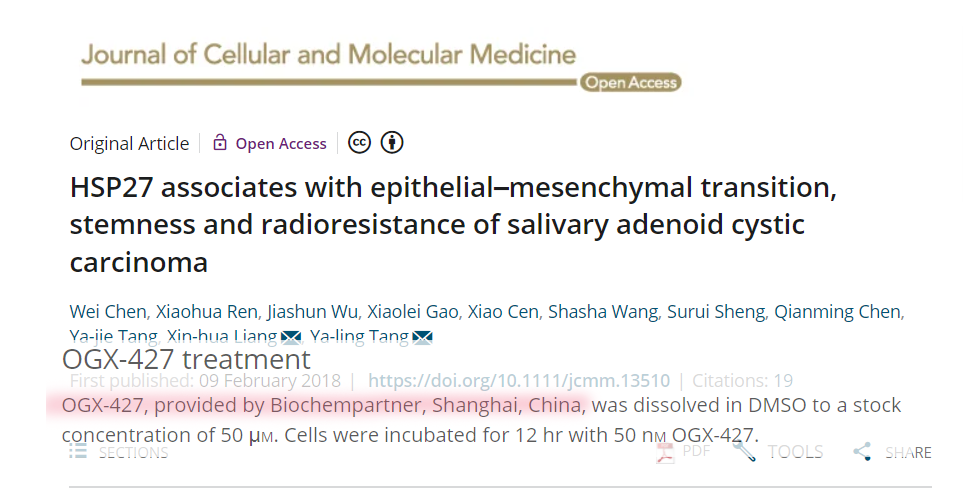HSP27 associates with epithelial–mesenchymal transition, stemness and radioresistance of salivary adenoid cystic carcinoma

Abstract Epithelial–mesenchymal transition (EMT) has been shown to associate with cancer stem cells and radioresistance. However, it is obscure whether EMT itself or specific EMT regulators play causal roles in these properties of salivary adenoid cystic carcinoma (SACC). Here, we exhibited that overexpression of HSP27 drove the migration and invasion, induced EMT, as well as mediated TGF-β1-induced EMT in SACC cells, accompanying the up-regulation of Snail1 and Prrx1. Conversely, HSP27 silencing reduced the migration and invasion and contributed to MET of SACC cells. HSP27 indirectly down-regulates the expression of E-cadherin through activating Snail1 and Prrx1 expressions. Overexpression of Snail1 or Prrx1 restored the migration and invasion in HSP27 knockdown cells. Enforced expression of HSP27 enhanced colony formation, CD133+/CD44+ population and radioresistance of SACC cell lines. In addition, HSP27 expression was positively associated with radioresistance and poor prognosis of SACC patients as well as with the expression of Prrx1 or Snail1 in SACC tissues. The data confirm an important function for HSP27 in SACC progression through regulating EMT and stemness, and they imply the possible association between EMT and radioresistance of SACC.




